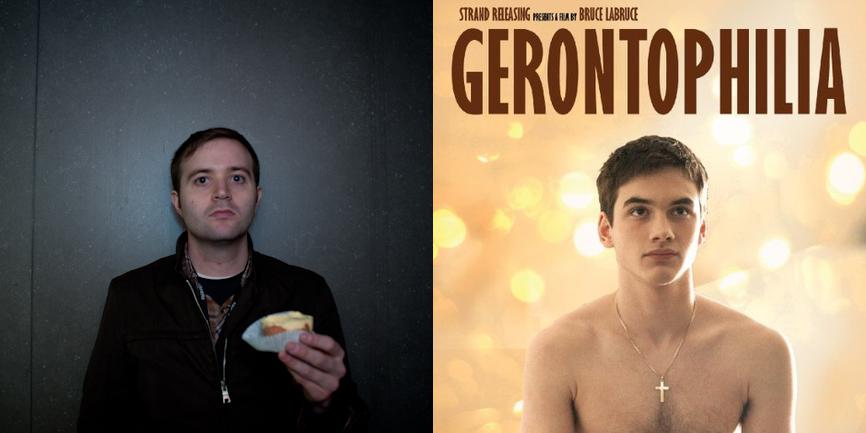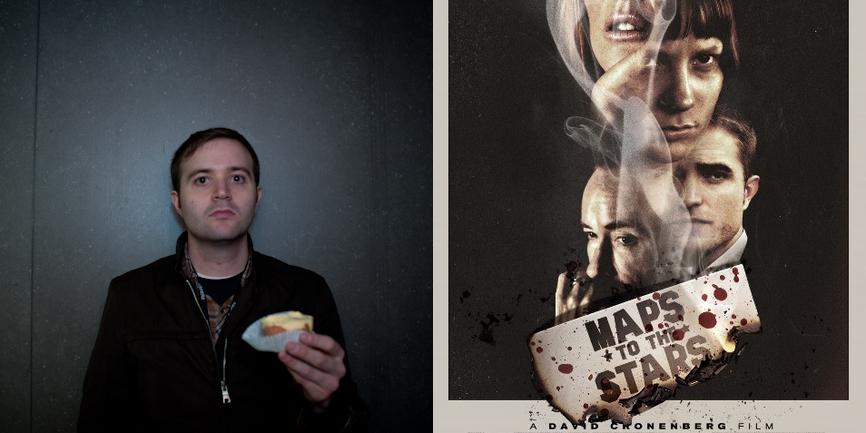It’s a real testament to Bruce LaBruce’s reputation that the most subversive thing he can do at this point in his career is to make a movie without hardcore sex scenes in it. I first became aware of LaBruce’s work as a teenager, rummaging through the “Cult” VHS shelf at Tower Records. Among the usual staples (Pink Flamingos, The Rocky Horror Picture Show, Repo Man, etc.) reliably sat No Skin Off My Ass, whose home video cover — a very grainy still of two frail, naked young skinheads in a bathtub — made it look like a porno snuff movie. Like Nail Gun Massacre and Herschell Gordon Lewis’ Color Me Blood Red, whose oversized box covers I ran across at an even younger age, its reputation was based on a single image and grew over time, taking on almost mythic proportions in my psyche. I didn’t actually see the movie until well over a decade later, when it screened in 16mm in BAM’s essential New Queer Cinema retrospective in 2012. It was both exactly like and nothing like I’d imagined it to be, gritty and grimy and low, low, low budget (like all the best underground filmmakers, LaBruce makes cheapness feel like an aesthetic decision, not a hindrance) but also genuinely funny and sexy. Thankfully, it wasn’t a snuff movie, but LaBruce has never been shy when it comes to violence, either. From 1996’s art-sleaze classic Hustler White to 2010’s XXX splatter extravaganza L.A. Zombie, the director has liberally mixed porn, camp and gore with varying levels of intensity. If the terms “provocateur” or “enfant terrible” were invented for anyone, they were invented for Bruce LaBruce.
(The second time LaBruce significantly popped up on my radar was during my college years, when Sight & Sound polled him for their 2002 Top Ten round-up. His list is perfect, and in addition to including both Dawn of the Dead (#4) and The Gospel According to St. Matthew (#7), it was the first real indicator that I needed to take Jerry Lewis seriously, thanks to his inclusion of The Bellboy in the #2 spot, right behind L’Avventura.)
If there’s one lesson Bruce LaBruce has taught us, it’s that art and porn are not mutually exclusive.The Museum of Modern Art is commemorating the release of LaBruce’s new film Gerontophilia with a full career retrospective. Over the past couple years, New York repertory film programming has been on a porno-chic kick (including Anthology Film Archives’ “In the Flesh” series, and Lincoln Center’s Radley Metzger and Walerian Borowczyk retrospectives), but that doesn’t make the fact that one of the most respected art institutions in the world is screening hardcore gay zombie porno any less significant. In debating the merits of un-simulated sex in cinema in the past, I’ve always argued that it’s only pornography if it has penetration in it, and even then it’s debatable. Maybe the internet had to make smut innocuous before it became respectable, but if there’s one lesson Bruce LaBruce has taught us it’s that art and porn are not mutually exclusive.
So it’s both a surprise and entirely appropriate that in Gerontophilia, LaBruce takes a much sweeter, softer approach than usual. Pitched on its Indiegogo page as a queer Harold and Maude (or “a reverse Lolita,” as the director puts it), the movie follows Lake (Pier-Gabriel Lajoie), a young retirement home employee who discovers he’s sexually attracted to the elderly. (In the interest of full disclosure, I contributed $25 to the film’s crowd-funding campaign, in exchange for occasional email updates and a link to watch the movie on Vimeo.) After getting noticeably aroused while giving mouth-to-mouth resuscitation to an old man at the pool, Lake strikes up a friendship with the eighty-something Mr. Peabody (Walter Borden), which quickly turns into a romance. In what I think is a first for LaBruce (I haven’t seen all of his films), Gerontophilia is entirely boner-free, though its most potent sequences are the occasional sex scenes, which focus their increasing attention on the eroticization of aging skin. A dream sequence with a surreal, perverse injection of gore hearkens back to his punk roots, but overall the scenes and their settings are significantly more grounded and naturalistic. LaBruce feels more at home in the real world than New Queer compatriot Gregg Araki, though by universally scaling back the camp, explicit sexuality and outré violence, he also feels a little out of his element. Ultimately, like the rest of LaBruce’s oeuvre, Gerontophilia is a boundary-pushing erotic fantasy whose settings and characters function as access points for provocation instead of reflections of reality. But where previous films such as Hustler White gleefully celebrate perversion, Gerontophilia seeks to normalize it. It’s a worthy, especially modern cause (and one I’ve tried to champion in my own work), but I did find myself wishing the movie had just a few boners in it. (Honestly, is there a movie that wouldn’t be improved by adding a few boners?)
It’s unfair to expect artists to constantly repeat their previous work. The patron saint of queer underground filmmakers, John Waters, articulated this exact problem during the release of his first “mainstream” movie, Polyester: “I had done the shock value thing, and it was becoming boring… I had this nightmare of myself at eighty, making movies about people eating colostomy bags.” While I hope LaBruce hasn’t left his punky, porny days completely in the past, Gerontophilia at its best suggests he’s capable of making equally provocative work on bigger budgets and for broader audiences.







